Newsletter: The clock is ticking for Afghanistan’s artists
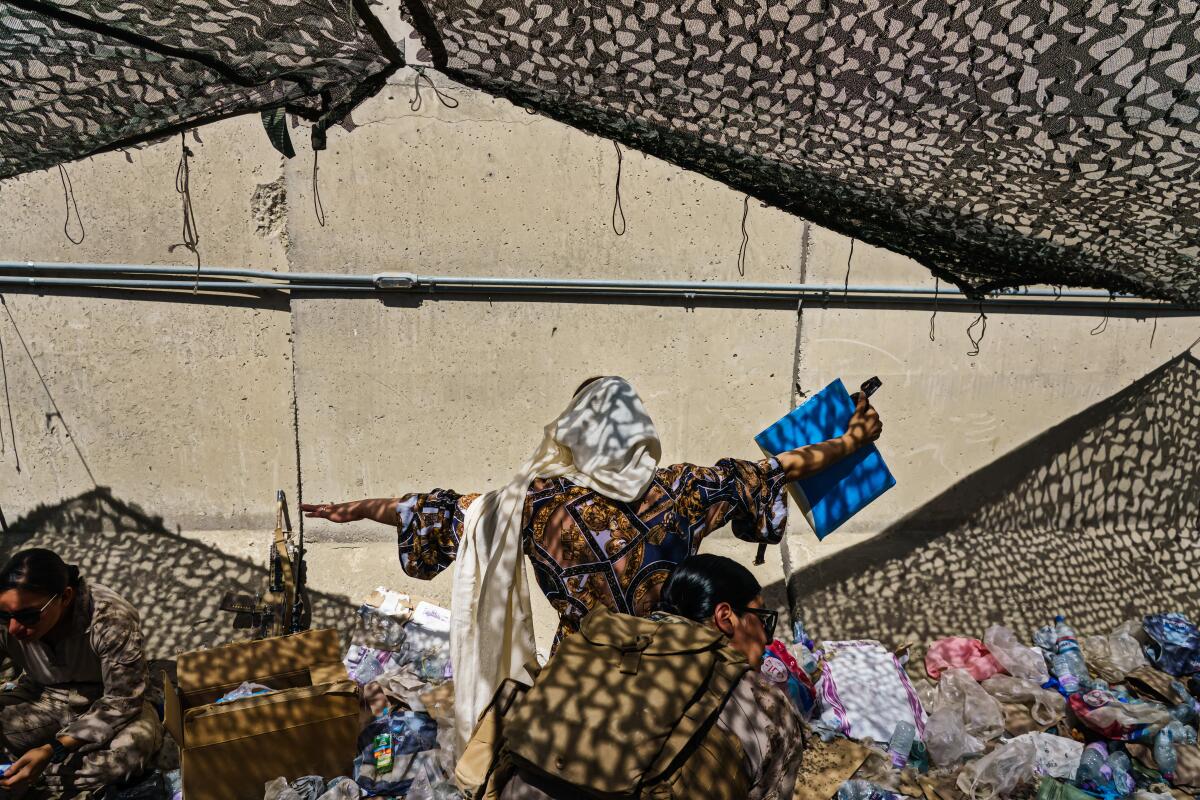
I’ve been glued to the news coming out of Afghanistan — and the Instagram accounts of my colleagues, photographer-correspondent Marcus Yam and correspondent Nabih Bulos, who are currently in Kabul. I’m Carolina A. Miranda, arts and urban design columnist at the Los Angeles Times with the week’s essential culture news.
A rupture for Afghan art
On Wednesday evening, an Afghan artist in Europe emailed me a list of other artists in Afghanistan with the hope that I might be able to share it with an organization — any organization — who might help his colleagues get out of the country. Less than 24 hours later, we woke up to the news that the entrance to Kabul’s airport had been bombed, killing more than 170 people, including 13 U.S. service members. The bombing was attributed not to the Taliban but to ISIS-K, an Afghan affiliate of Islamic State.
Regardless of who masterminded the killing, the tragedies further punctuate the ways in which the clock is ticking for cultural workers who remain in a Taliban-governed Afghanistan. As I wrote in a piece published Sunday, it is a critical moment for Western arts institutions to step up and urge their governments to evacuate artists — some of whom have been critical of the Taliban.
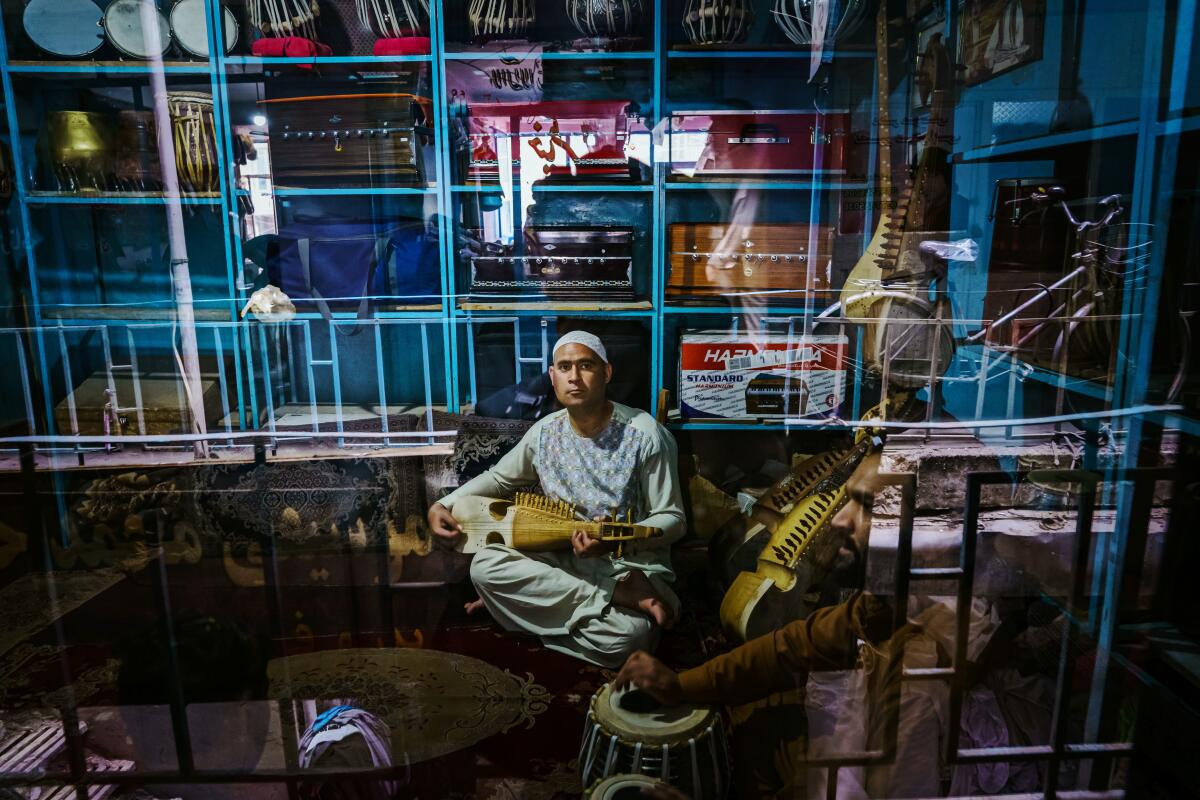
Thankfully, some artists and organizations have rallied.
This week, an open letter urging the U.S. government “to do everything in its power to facilitate the departure from Afghanistan of at-risk Afghans, and to include artists, performers, writers, dramatists, filmmakers, photographers and visual journalists” had gotten the support of organizations such as Creative Capital, PEN America, the Magnum Foundation, For Freedoms and the Dramatists Guild of America. It was also signed by prominent U.S.-based cultural figures, including Walid Raad, Michael Rakowitz, Coco Fusco, Hal Foster and Viet Thanh Nguyen. (You can add your signature via this link; boy, would it be nice to see some major museums on that list.)
Even under the U.S. occupation, being an artist in Afghanistan was a profession fraught with risk. In 2015, when artist Kubra Khademi took to the streets of Kabul in body armor made in the form of a woman’s body — a performance intended to protest street harassment — she was greeted with threats. (She now lives in France.) Culture writer Farah Nayeri reported on this incident and the raft of other dangers facing artists in an extensive article published in the New York Times last year.
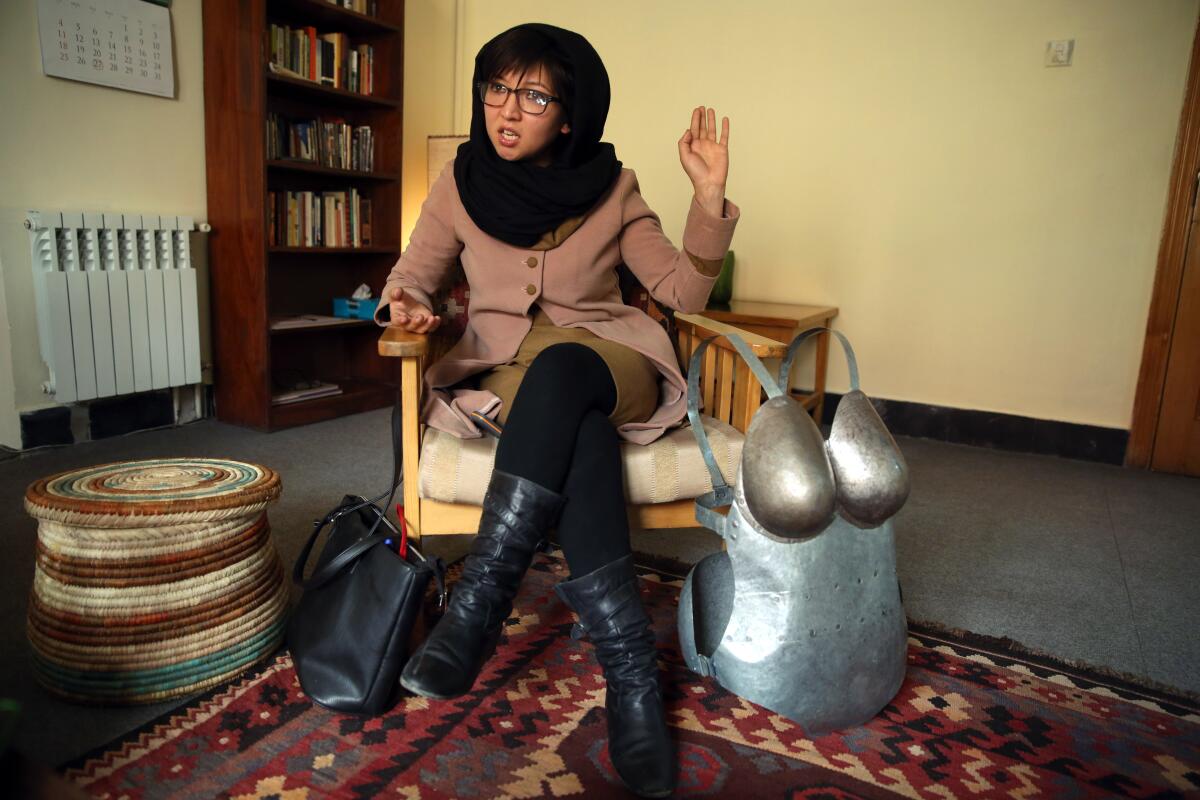
Now, as the end of the evacuations loom, so does the possibility of a generation of cultural voices being silenced.
It’s a point perfectly articulated by Afghan artist Mariam Ghani‘s documentary film, “What We Left Unfinished,” which was released in the U.S. earlier this month. (It is streaming online through Thursday via the Laemmle chain of theaters in Los Angeles.)
Ghani is an artist who has been receiving tabloid scrutiny as of late due to the fact that she is the daughter of deposed Afghan president Ashraf Ghani. Whatever her father’s politics, Ghani is an established artist who has made prescient works related to cities and segregation and virality and pandemics. And in this moment of chaos lands her artful documentary, which tracks the fate of five unfinished films produced during Afghanistan’s communist era — films that were left incomplete due to political churn.
“What We Left Unfinished” is an illuminating look at a “golden” period in Afghan cinematic history, which began in the 1970s and lasted into the 1990s. Ghani has recovered incredible fragments of the unfinished projects. There are also wild anecdotes from their actors and directors about artists getting stopped by mujahideen as well as budget-strapped productions using live ammunition left over from various wars for special effects. And, of course, there are the rigors of trying to create art while contending with shifting political currents among various Afghan and Soviet regimes.
Make the most of L.A.
Get our guide to events and happenings in the SoCal arts scene. In your inbox once a week.
You may occasionally receive promotional content from the Los Angeles Times.
When the Taliban took over in the 1990s, they burned hundreds of films. Ghani is able to resuscitate some of their memories through her own work, thereby preserving a piece of Afghan culture for the future.
It’s a memory that, as always, remains fragile. “From the time of the mujahideen, until today with ISIS and the Taliban — they are enemies of film,” says one director. “If the Taliban catch us, they will rip us to pieces.”
Here’s hoping they and their work have made it to safety. Time is almost out.
On the stage
Playwright Luis Alfaro is now serving as associate artistic director of the Center Theater Group and he is making some needed changes to how L.A.’s flagship theater operates. Times theater critic Charles McNulty has been writing for some time that the CTG was in need of a good goosing. Now he sits down with Alfaro to hear more about his plans. At the top of the list: widening the new play development pipeline. “We don’t need to find the Pulitzer Prize-winning playwright of this year,” Alfaro tells McNulty. “We need to find the one who is five plays away from that Pulitzer.”
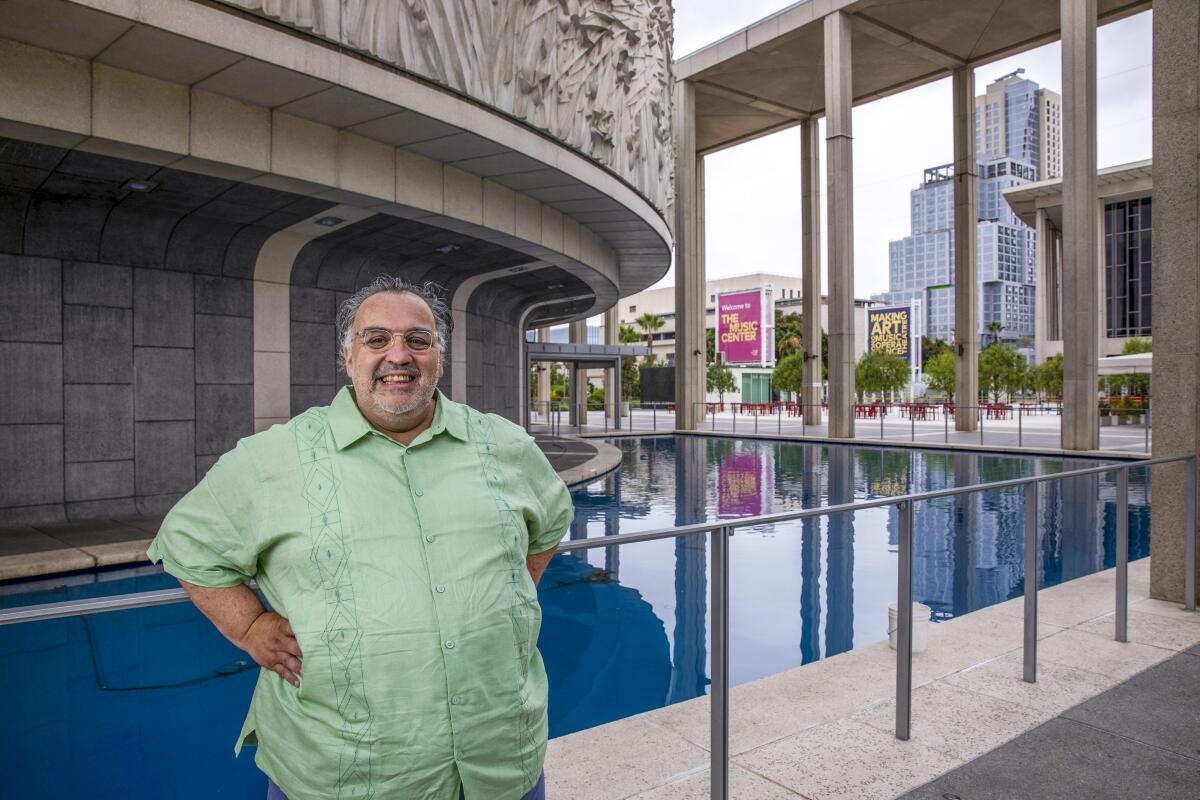
The Times’ Jessica Gelt reports on the challenges faced by L.A.’s small theater companies as they attempt to navigate reopening amid the arrival of the Delta variant. This raises looming financial questions: If theaters aren’t able to stage at least a handful of productions before the end of the year, some may be facing devastating financial shortfalls. “If we have to go through another two years of just fundraising and applying for emergency grants, we’re just not going to make it through,” says Elisa Bocanegra, founder of Hero Theatre.
Classical notes
The set for the L.A. Opera‘s production of “Il Trovatore”? It’s been circling the Port of Los Angeles since Aug. 10 — a victim of pandemic disruptions to shipping. With the probability high that the sets wouldn’t arrive in time for the opera’s opening night, the company is rush-building a whole new set. L.A. Opera technical director Jeff Kleeman tells Jessica Gelt that the additional effort and expense will be worth it: “Our artisans and chorus members have been out of work for so long that we are committed to spending the money and getting back to work.”
Enjoying this newsletter? Consider subscribing to the Los Angeles Times
Your support helps us deliver the news that matters most. Become a subscriber.
It is shaping up to be the Summer of Dudamel. Times classical music critic Mark Swed reports on a recent performance that featured L.A. Phil musical director Gustavo Dudamel leading some engrossing performances of Tchaikovsky’s Fifth Symphony and a new concerto, “Fandango,” by Mexican composer Arturo Márquez. So engrossing was the show that the audience put down their chip wrappers to listen. It was, he writes, a “beautifully played, elegant yet exciting performance.”
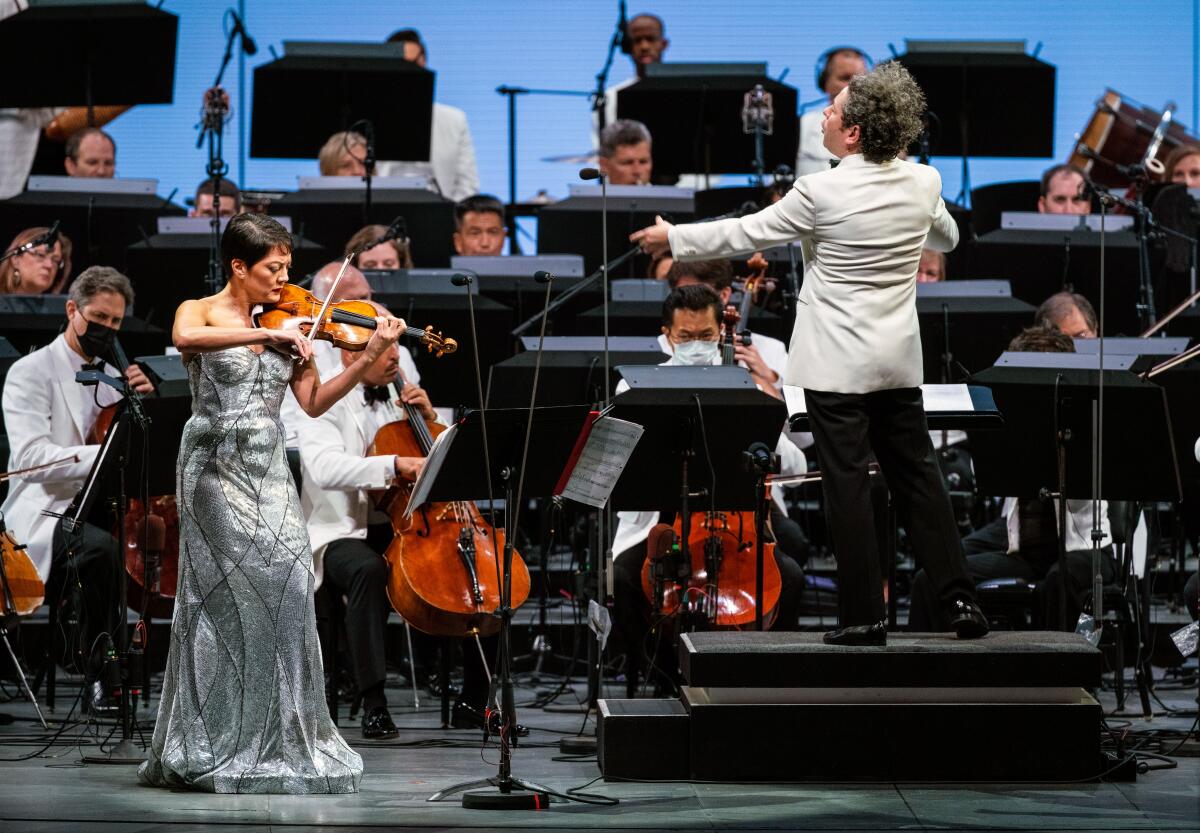
Art report
Sand. There’s going to be 20 tons of it inside MOCA Geffen, reports Deborah Vankin, for a staging of “Sun & Sea,” a climate-crisis opera from the Lithuanian company Neon Realism. It’s landing at the museum courtesy of a collaboration between MOCA, the Hammer Museum and CAP UCLA. Written by Vaiva Grainytė, scored by Lina Lapelytė and directed by Rugilė Barzdžiukaitė, the opera, which won the top prize at the 2019 Venice Biennale, unfolds over five hours as various performers soliloquize about the adversities of climate change.
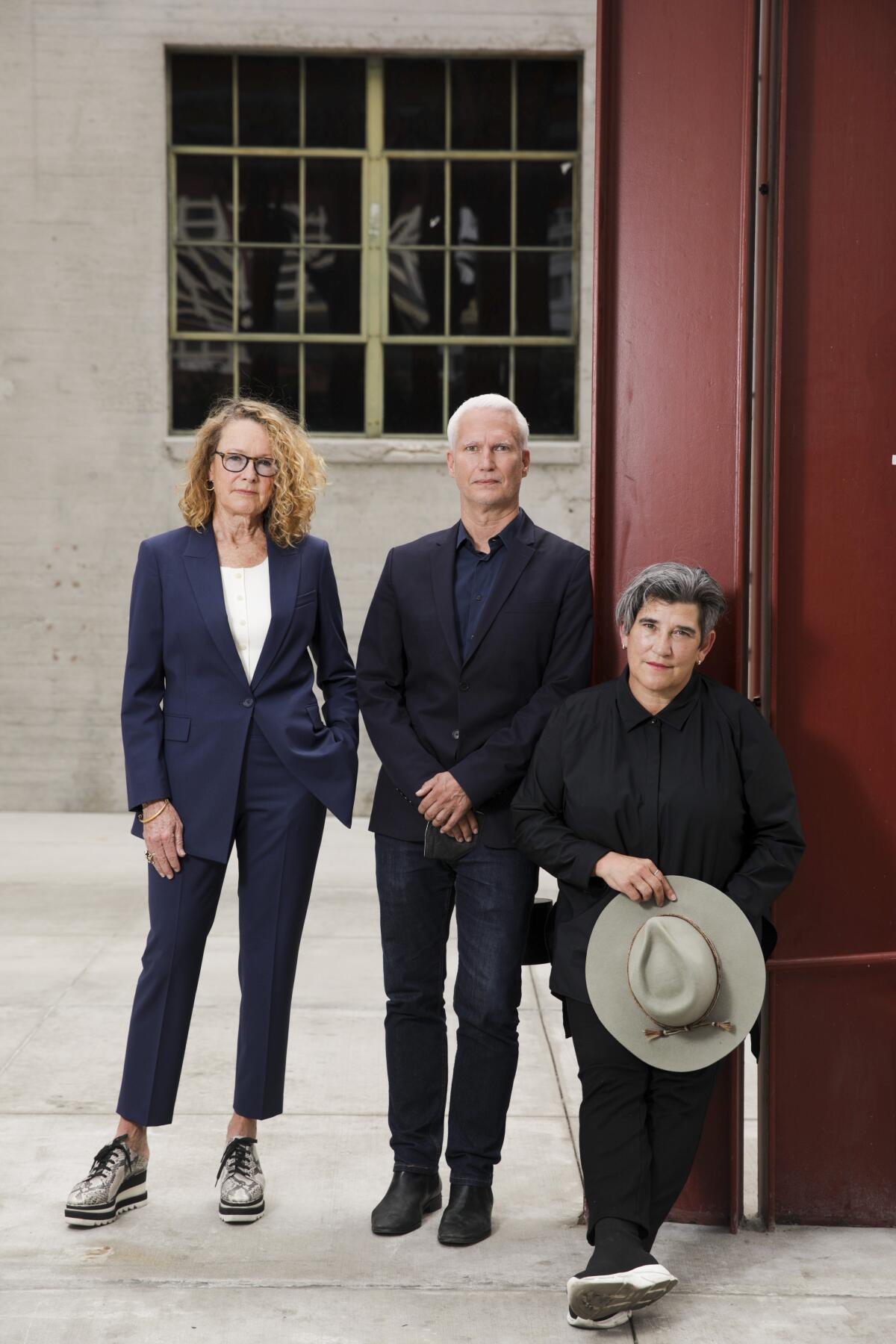
My colleague Justin Ray, who writes The Times’ Essential California newsletter (are you subscribed?), reports that Palm Springs has another statue controversy on its hands. In addition to #MeTooMarilyn, there has been an ongoing struggle to remove a statue of former mayor Frank Bogert, who led Palm Springs during the 1960s, when a city-funded effort razed a Black and Latino neighborhood to make the area more appealing to tourism.
And for years, activist Rodney Barnette was surveilled and harassed by the FBI for his organizing, first with the Black Panthers, followed by a stint working with Angela Davis. Now his extensive FBI file has become raw material for his daughter, artist Sadie Barnette, who has employed it as a point of departure for a pair of exhibitions at the Benton Museum of Art at Pomona College and Pitzer Art Galleries. As the artist tells The Times’ Ian F. Blair: “You can surveil all the actions, you can’t surveil our souls and our love.”
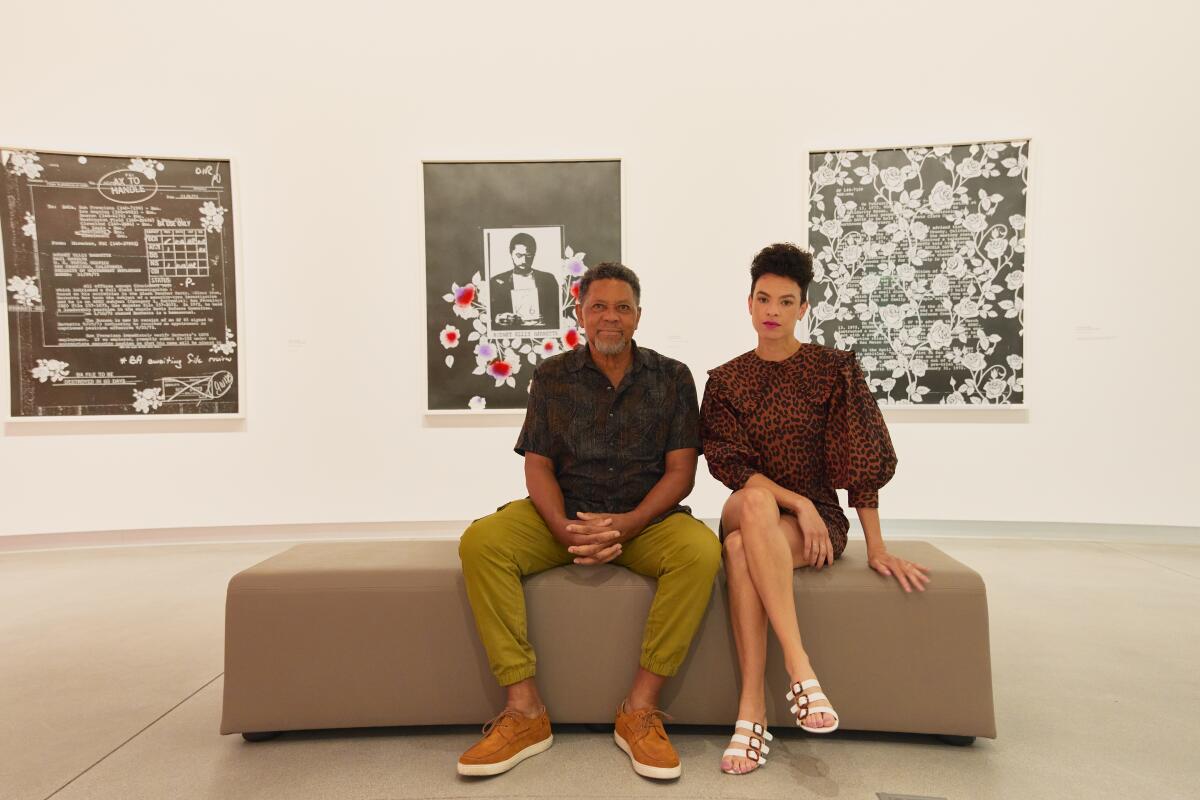
Robert Abele reviews the documentary “Bob Ross: Happy Accidents, Betrayal and Greed,” which paints a picture that isn’t all happiness. The film chronicles the battles between the painter’s family and his business partners, who today run the profitable company that bears the artist’s name, Bob Ross Inc. “Part biopic, part mystery, part exposé,” writes Abele, the doc “is ultimately a cooled celebration, one eager to acknowledge that gurus are complicated, showbiz is treacherous, and some landscapes hide things.”
Bob Ross Inc. has issued a statement in response to the documentary, describing the portrayal as “inaccurate and heavily slanted.”
Essential happenings
Our listings guru Matt Cooper has got it going on with a weekend roundup that includes performances at REDCAT by the inimitable Ron Athey, the L.A. performance artist who currently has a survey on view at the ICA LA. (ICYMI, Times art critic Christopher Knight dug the show, noting that it “goes a long way toward illuminating the originally transgressive edge of being pro-queer.”)
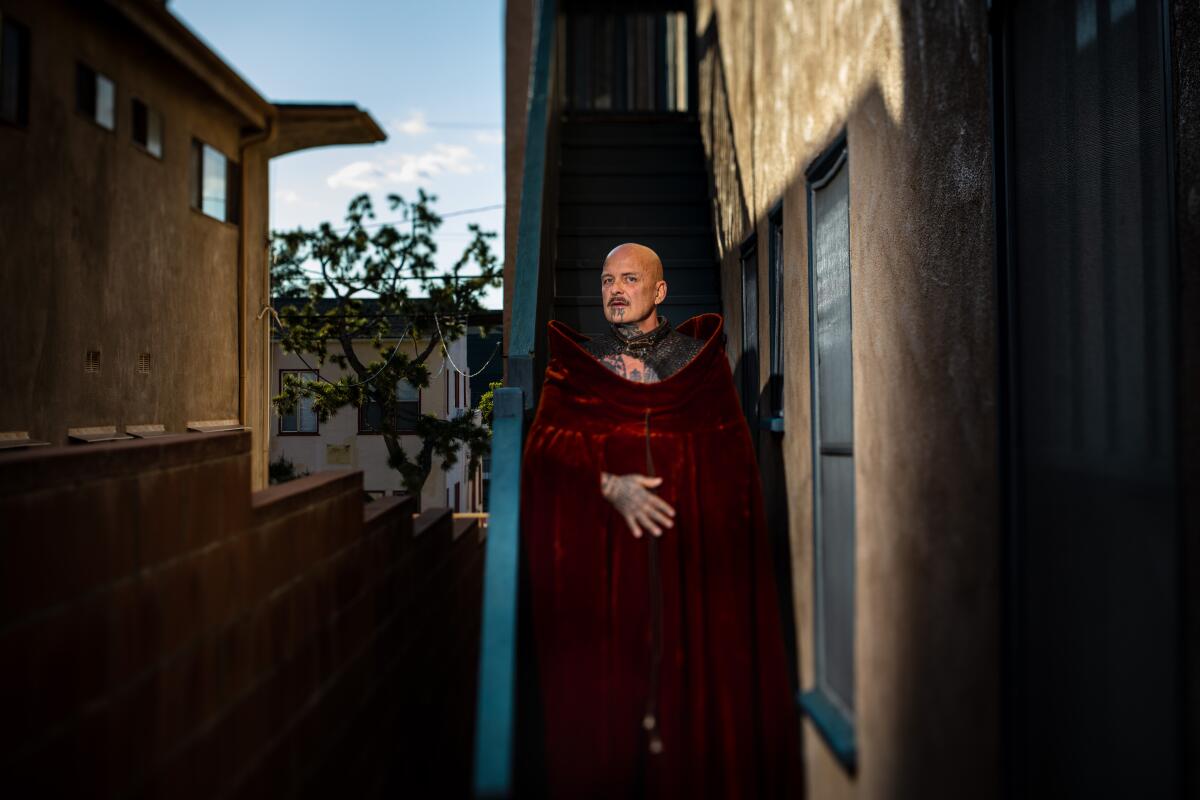
It’s definitely a good time to make a trip to the Craft Contemporary on the Miracle Mile — especially now that LACMA is half-shutdown and doesn’t have its permanent collections on view. An enjoyable group show titled “Making Time” features work by artists from around SoCal whose work dwells on the passing of time. This includes assemblages made of clocks by Betye Saar and paintings by Gronk that emerge from the artist’s daily practice of drawing. There are other intriguing works by Tanya Aguiñiga, Timothy Washington and Ann Weber.
The museum has also turned over its courtyard to the architectural collective Figure as part of a series of collaborations with Materials & Applications. For the installation “Veil Craft,” Figure uses construction netting to turn the courtyard into a gathering space that billows in the breeze. (Think: pleated tablecloth at an architectural scale.)
Both are on view through Sept. 12.
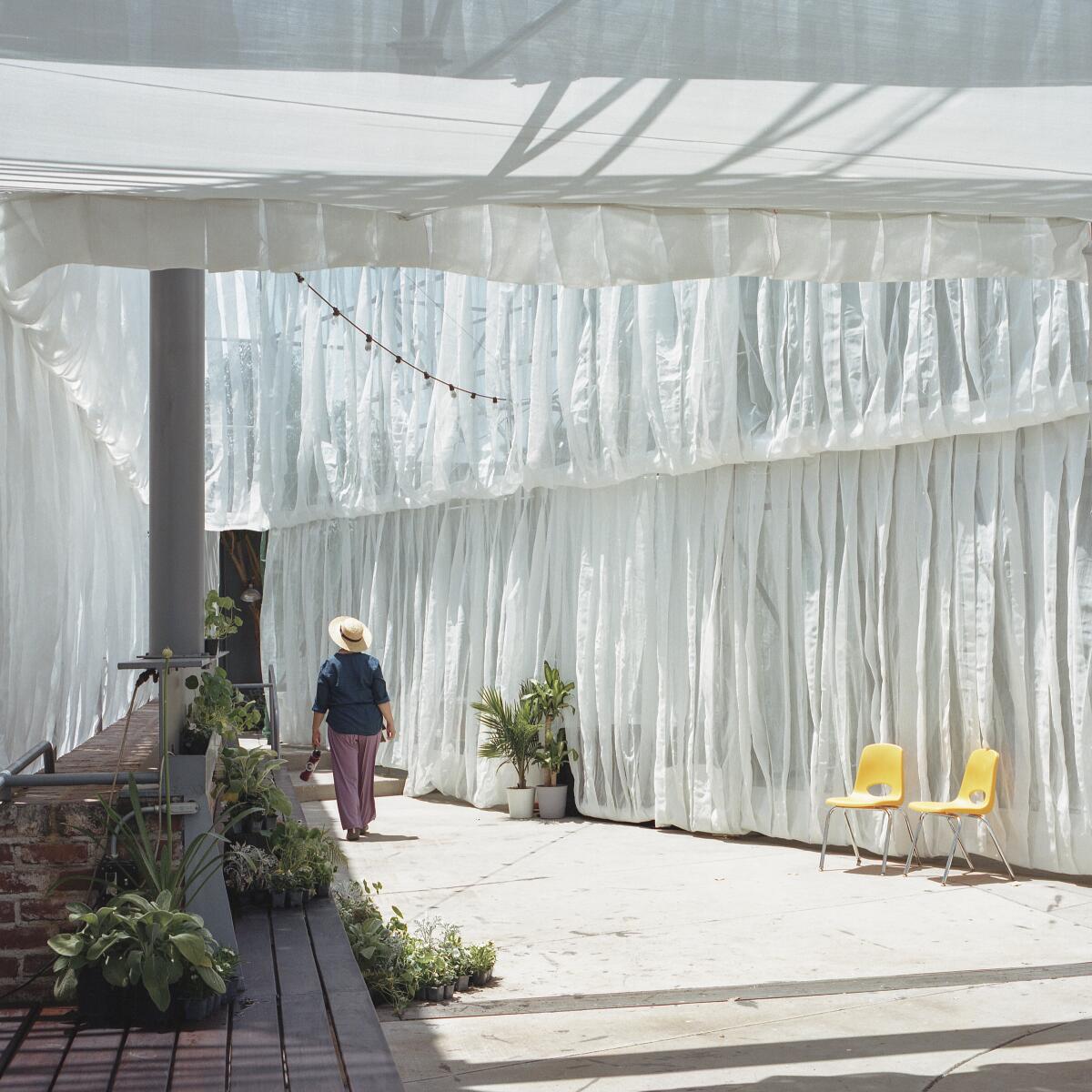
Super ginormous fall preview
We have gathered all of the essential fall happenings in our SUPER GINORMOUS FALL PREVIEW PACKAGE. [Read in monster truck voice.]
Theater critic Charles McNulty gives us the 11 essential SoCal performances for the fall, including a performance of “Lizastrata,” a mashup of Liza Minnelli and Aristophanes by the Troubador Theater Company. Meanwhile classical music critic Mark Swed tells us he is looking forward to a dozen performances around SoCal, including the Ojai Music Festival, which this year is being organized by John Adams. And among art critic Christopher Knight‘s 11 essential SoCal art exhibitions are LaToya Ruby Frazier‘s video and architecture installation at the California African American Museum and “Kim Abeles: Smog Collectors, 1987-2020” at Cal State Fullerton’s Begovich Gallery.
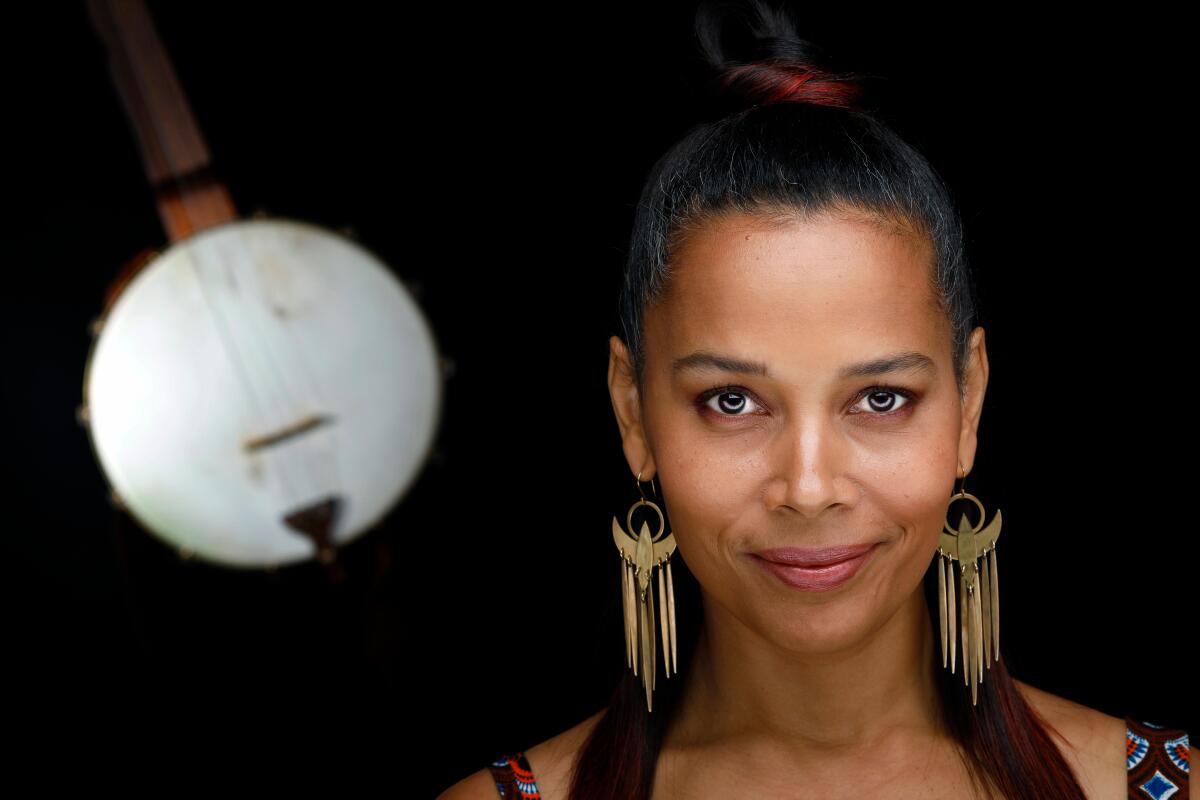
Matt Cooper rounds up half a dozen museums to check in on this fall, such as the highly anticipated opening of the Academy Museum, as well as a list of the fall’s essential musicals, including the much-delayed production of “Hamilton” at the Hollywood Pantages.
The Times culture team has also produced a comprehensive list of movie releases, a must-watch list of TV shows and must-play video games, the 25 most exciting concerts, festivals, albums and music docs and the season’s 30 most anticipated books. (Gird your loins, America! Jonathan Franzen has written yet another book that apparently we are all supposed to read.)
You’ll be able to find the whole enchilada at latimes.com/fallpreview starting Sunday morning.
What I’m watching
Last week, I read that Austria’s Weltmuseum Wien will not loan the elaborate headdress that may have once belonged to Aztec leader Moctezuma to Mexico on the occasion of the 500th anniversary of Spain’s conquest because it is too fragile to travel. Naturally, this raises the uncomfortable politics of a country not having access to its own historical legacy. It also raises the question of how exactly an Aztec headdress ended up in Austria.
There are conflicting reports about this. Some articles, including reports in Mexican media, describe the headdress as a gift that was given by Moctezuma to Hernán Cortés. Others say that it was likely among a batch of items sent by Cortés back to Europe. Either way, the headdress had landed in European inventories by the end of the 16th century and somehow made its way to Vienna by the 19th.
The director of the Weltmuseum, Christian Schicklgruber, told the Spanish language wire service EFE last year that the headdress likely never belonged to Moctezuma and was instead worn by an important shaman. That is largely irrelevant in Mexico, where the piece is almost universally referred to as el penacho de Moctezuma — Moctezuma’s headdress.
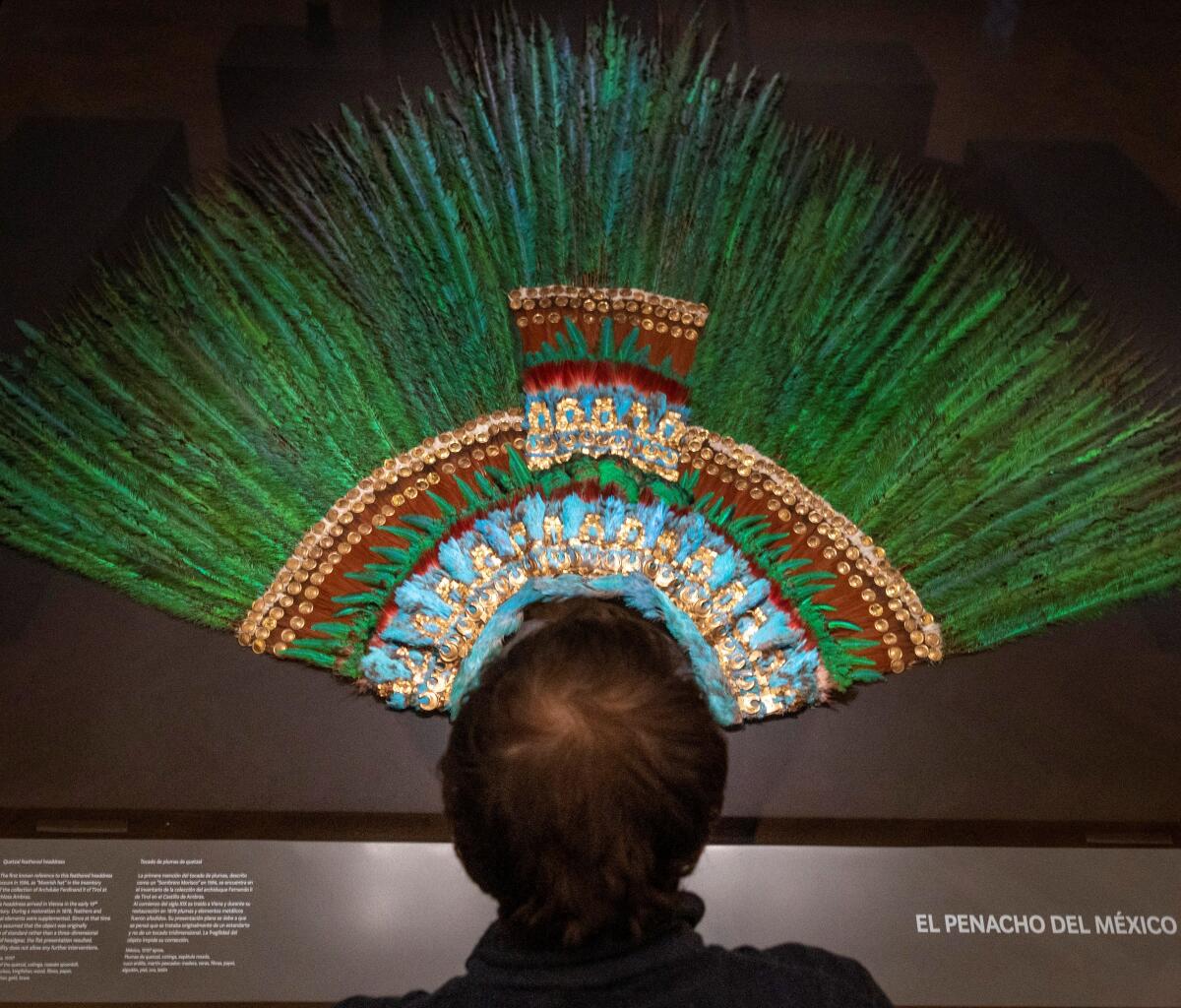
All of this inspired me to go and give the 2018 feature film, “Museum,” by Mexican director Alonso Ruizpalacios, another look. In it, a couple of hapless crooks, played by Gael García Bernal and Leonardo Ortizgris — steal a sack full of ancient objects from the renowned National Museum of Anthropology in Mexico City. But they don’t take the replica penacho knowing that the original resides in Austria. This leads to a brief and absurd mid-theft discussion about the value of authenticity.
Times contributor Yolanda Machado had a good interview with García Bernal and Ruizpalacios upon the film’s debut at the Toronto Film Festival in 2018. In his review, Times contributor Gary Goldstein described the film as “stylish” and “fun.” Overall, it’s an enjoyable heist flick with a 1970s existential vibe. Now somebody please make a sequel that goes down in Vienna.
Passages
Peter Williams, a Delaware painter who explored narratives of Black existence in surreal and fractured ways, has died at 69.
Kaari Upson, an artist known for producing resin sculptures that explored the psychologies of domestic life and desire, sometimes in unsettling ways, has died at 51. In his obituary, New York Times critic Jason Farago describes her as “one of the most significant artists to emerge from the vibrant Los Angeles art scene of this century.”
Charlie Watts, the deadpan drummer who served as the beating heart of the Rolling Stones, has died at 80. The Times’ Mikael Wood has an appreciation: “If other guys were rolling, somebody had to be the stone.” Interestingly, Watts worked as graphic designer prior to his career as a musician and helped craft the band’s graphic look. He also regularly sketched the hotel rooms he stayed in while he was on tour, according to Gavin Edwards’ obituary in the New York Times.
Style writer Guy Trebay pays tribute to Watts’ fashion sense, which eschewed rock excess for Savile Row suits — noting that the Huntsman & Sons catalog contains a fabric, the Springfield Stripe, that was designed by Watts.
In other news
— Headline of the week: “Capybaras Are Waging Class War in Argentina.” Which pairs well with this amazing mural of revolutionary capybaras in Buenos Aires.
— Since we’re on the subject of unfettered capitalism, Eileen Kinsella has a good explainer on the blue Basquiat painting that popped up in Beyoncé and Jay-Z‘s new ad for Tiffany.
— The Lucas Museum of Narrative Art has been shopping. Recent acquisitions include a fresco panel by Diego Rivera and works by Paul Cadmus, Jacob Lawrence and Charles White.
— Message to the Art World: No. More. Tote Bags. The New York Times’ Grace Cook reports that they are a scourge. While everyone is at it, please stop it with the monster catalogs.
— I’ve been rather obsessed with the London’s Marble Arch Mound, designed by Dutch firm MVRDV. It’s one of those cases of the design failing — spectacularly — to live up to the rendering. Greg Allen has the supreme take.
— San Francisco’s Millennium Tower continues to sink.
— “I suspect he would sense in Los Angeles’ urban civilization as currently constituted a failure of nerve, to borrow one of his signature expressions,” writes Colin Marshall in an essay on the 50th anniversary of Reyner Banham‘s groundbreaking “The Architecture of the Four Ecologies.”
— Two sites in Highland Park connected with the Chicano art movement of the ‘70s — Centro de Arte Publico and the Mechicano Art Center — have been added to the list of L.A.’s Historic-Cultural Monuments.
— Erika Paz over at CalMatters has an interesting report about how California’s state housing authority is going after sports arenas that are developing empty publicly owned lots — but shortchanging the public on affordable housing.
— Trump’s border wall is falling apart in Arizona.
And last but not least ...
There is an art to compiling the perfect sequence of absurdity-soaked Instagram stories and William J. Simmons is a master of the form. Follow.
The biggest entertainment stories
Get our big stories about Hollywood, film, television, music, arts, culture and more right in your inbox as soon as they publish.
You may occasionally receive promotional content from the Los Angeles Times.




